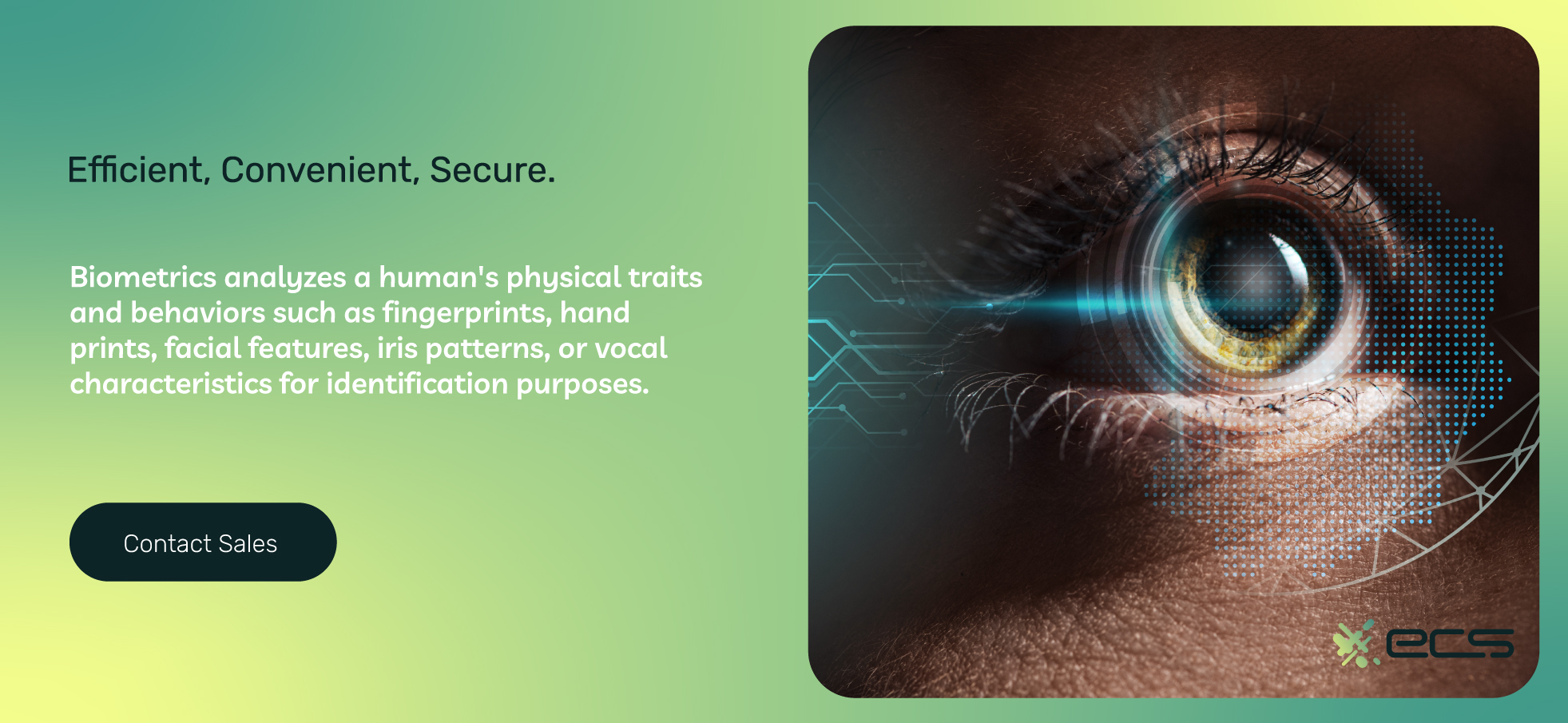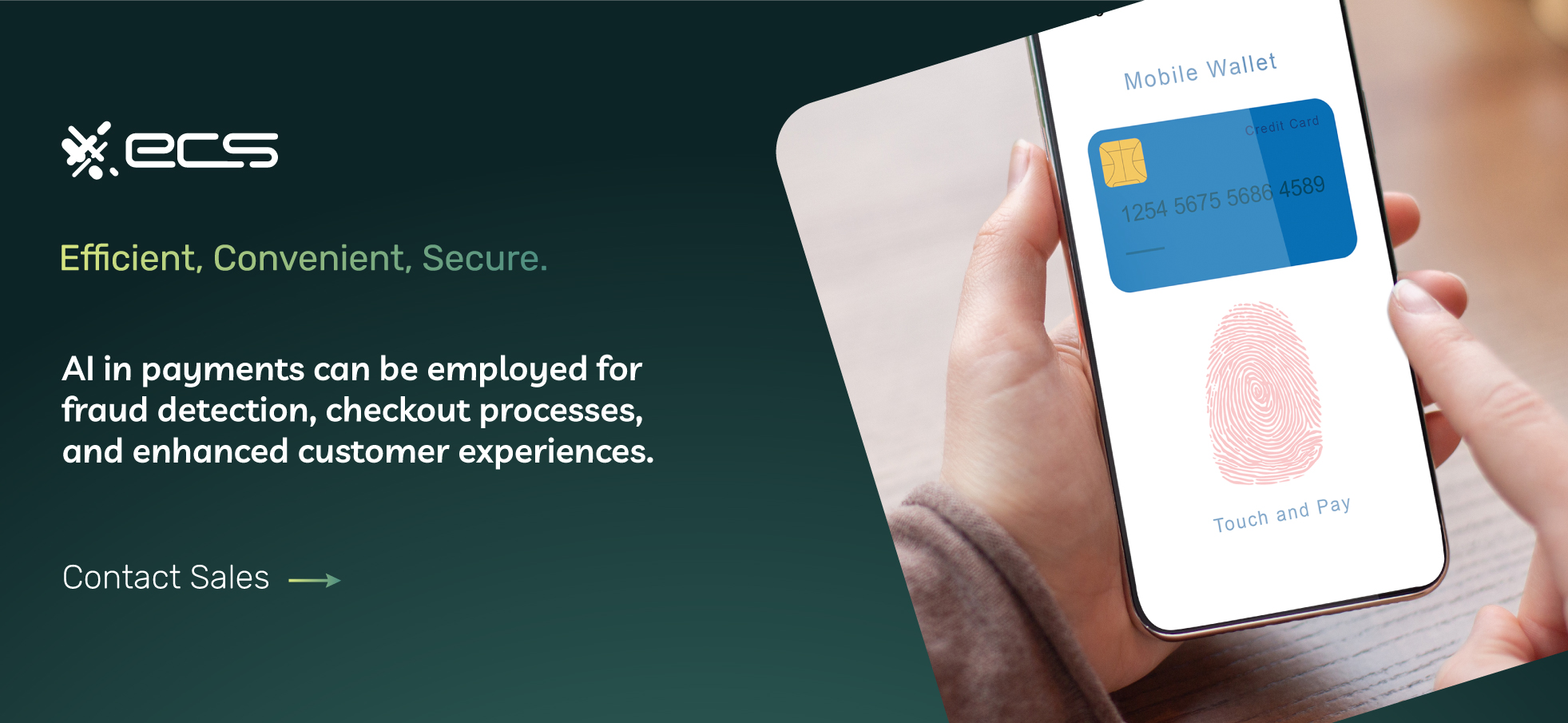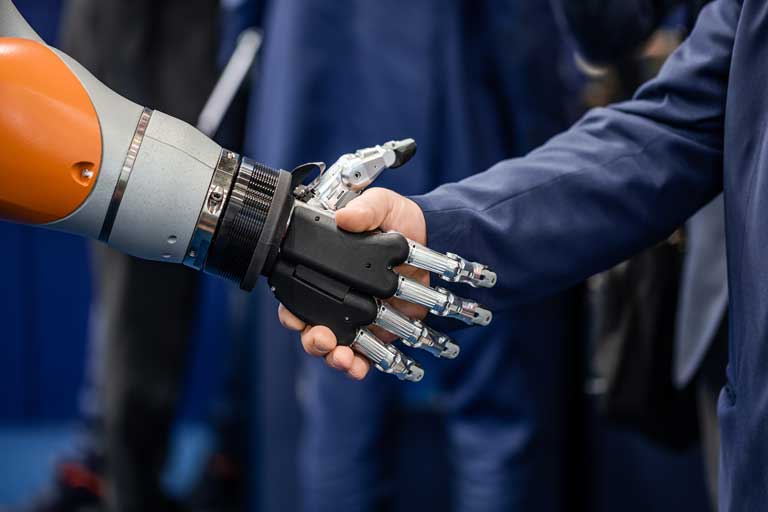AI in payment processing is a technology so advanced, we may not even realize it’s being used. We are currently living out future predictions, artificial intelligence is here and all around us. Alexa and Siri are our personal handheld assistants. We have online plug-in modules that help in our learning, efficiency, and accuracy. We have chatbots for most websites that offer assistance as soon as we enter the page.
With all these AI advancements, we now have access to a surplus of benefits that were previously unavailable. AI has made daily life easier and more convenient.
Moreover, the surge of safety measures that escalated during COVID-19’s peak created a significant impact on the global payments industry. This resulted in more digitized payment methods and an online consumer world. With today’s evolving technological advancements, it is no surprise that AI has made its mark on every industry. This includes the modernization of payment processing and biometric payments.
Algorithms and data analytics have become crucial in industry growth, especially in the financial and payments industry. However, with any groundbreaking technology, some challenges must be overcome before reaping the benefits.
Artificial Intelligence Defined
Artificial intelligence simulates human intelligence demonstrated by machines or computers. AI has multiple subcategories that make up the technology as a whole, creating smart machines. There are 2 types of AI. Cloud-based and edge.
Cloud-based AI may be helpful when data storage is of concern. Remote devices connect to a central cloud that stores the necessary data.
However, edge AI is stored and processed directly on a device or server close by. Edge AI also offers more security and can serve even when internet capabilities may be lacking.
Computer Vision (CV)
Computer vision is an interdisciplinary technology that uses computer analysis to create a high-level understanding. CV can decipher visuals such as digital images, numbers, or videos. Object detection, Image segmentation, facial recognition, pattern detection, edge detection, feature matching, and image classification are all components of computer vision. Computer vision aims to generate an advanced understanding to automate tasks that were preceded by only human visual intelligence.
Natural Language Processing (NLP)
Natural language processing (NLP) is an interdisciplinary technology in the linguistics subfield. It is designed to process and analyze an understanding of the natural human language. Meaning a computer can understand written and verbal words and languages in the same way a human would understand.
Machine Learning (ML)
Machine learning (ML) is an interdisciplinary technology that uses historical data, and a lot of it, to create new algorithms. This allows software applications to become more accurate without being programmed explicitly to do so. The altering of output is a “learned” understanding that improves performance.
Machine learning allows technology to classify data, find patterns, and most importantly for merchants to make predictions on user behavior. This means a merchant can better understand how to move forward with their brand while leveraging learned behavior from their customers.
There are three types of machine learning: supervised, unsupervised, and reinforcement learning.
Supervised: This type of ML is the most utilized. Supervised machine learning is when someone is feeding an algorithm or information to help a machine learn. This learning type is effective for businesses for the prediction of sales, optimizing inventory, and better-detecting fraud.
Unsupervised: Unsupervised ML does not require data input to produce results. Instead, it uses pre-existing information to draw conclusions on patterns and behaviors in such data. Unsupervised machine learning can create group clusters that will designate customer information based on similarities such as purchase behavior, popular inventory, and customer preferences.
Reinforcement: Reinforcement ML closely resembles human learning behaviors. Meaning algorithms are created when the machine interacts with its environment. Learning occurs when the interaction produces a negative or positive reward.

The Difference between Biometrics and Artificial Intelligence in Payments
Though some can often confuse them as interchangeable, artificial intelligence (AI) and biometrics play distinct but often complementary roles in payment processing; they are related but distinct concepts. Let’s explore the differences between biometrics and AI.
Biometrics in Payments
Biometrics analyzes a human’s physical traits and behaviors such as fingerprints, hand prints, facial features, iris patterns, or vocal characteristics for identification purposes. To many’s surprise, biometrics isn’t AI. However, AI technologies can be integrated into biometric systems for improved functionality.
In payments, biometrics serve as a secure method for authentication. For example, a user can unlock their smartphone’s payment app or mobile wallet, such as ApplePay, or authorize a transaction with stored card information using a facial scan or fingerprint.
Artificial Intelligence in Payments
Conversely, AI refers to using computer systems to perform tasks that would normally require human intelligence. These tasks include problem-solving and understanding natural language. It can also develop as the computer studies and analyzes patterns (machine learning).
AI in payments can be employed for fraud detection, checkout processes, and enhanced customer experiences. For fraud detection, AI algorithms analyze transaction patterns to identify unusual behavior. The same pattern identifying technologies can also personalize consumer recommendations. AI also assists with virtual chatbots to aid users online.
Below are two examples of how AI-powered biometrics can enhance the overall payment experience:
Learned Biometric Recognition: AI algorithms can analyze and recognize patterns in biometric data. However, taking it a step further, machine learning can improve accuracy over time by learning from a history of biometric data.
Anti-Spoofing Measures: Spoofing refers to using fake identifiers, such as an impression of a fingerprint or a picture of the true user. AI can detect and prevent spoofed biometric identification attempts.
In summary, biometrics and AI have distinct roles in payments. Biometrics focuses on using unique human characteristics for secure identification purposes. However, the integration of AI technologies can enhance biometrics capabilities and accuracy. The robust combination of AI and biometrics ultimately provides users convenience and security against fraudulent activities.
9 Artificial Intelligence Benefits in Payment Processing
Artificial intelligence in all its scopes have had a significant impact on businesses. Not only in how they operate and interact with customers but also with AI payment gateways and the entire checkout experience.
1. Security and Fraud Prevention
In a soon-to-be cashless society, digital payments are on the rise. With such high volumes of online payments, there is a greater probability of resulting in fraud from data hackers. However, with AI payment systems, fraud is put to a halt and caught before any devastating results occur.
Traditional fraud detection programs consider set variables such as geographic location, transaction amount, merchant type, etc to determine a fraudulent transaction. A transaction would automatically be flagged as fraudulent if the purchase was in a new location, at an unfamiliar merchant, or higher than normal.
However, this conventional approach comes with restrictions. It cannot be used in high-volume situations, and would often provide inaccurate results. With heightened digital transaction volumes, payment gateways can no longer rely on traditional fraud-detection measures. Gateways must look into utilizing AI’s powerful advancements.
Fraud detection is now easier than ever with AI’s advanced technology. One of AI’s top qualities is being able to detect patterns and unusual activity. In recent years, banks have been using AI to help in protecting their consumers.
Artificial intelligence in digital payments stores and analyzes data. AI systems can then decipher transactional history and behavioral patterns. If AI were to pick up on any suspicious or unusual activity, the customer or bank is notified. If the activity was, in fact, legitimate the customer can confirm via email, phone, or text with their bank.
AI payment gateways account for a variety of factors to provide a risk score. If a merchant has a good record, the risk score will be low. If a time zone, IP address, or location is obscure in a digital transaction, there will be a higher risk score.
Once the risk score is determined, alongside a few other factors, a transaction can then be logically determined as legitimate or fraudulent. This advancement allows for easier anomaly determination over a wider range and higher transaction volumes.
2. Reducing False Card Declines
Nothing is more frustrating than a card declining at check-out. Especially when it shouldn’t be. When a card is falsely declined, the cardholder’s bank may reap a negative impact of declined trust and reputation.
Declines mostly occur due to a set number of reasons. This includes when a card is run above a set threshold, or if the transaction is flagged as fraudulent. AI payment systems can use specific algorithms and data points to properly identify transaction outliers rather than a predetermined rule-based system. Saving merchants, customers, and banks time, status, and headaches.


3. Replacing Traditional Payment Cards and Currency
AI is now utilizing computer vision. You may be most familiar with this in terms of digital wallets. Computer vision is utilized in digital payment methods, replacing physical cards with smartphone applications like Apple Pay, Google Pay, or Samsung Pay.
Smartphones store account information and purchases can be completed digitally. Computer vision also allows banking accounts to be opened online, rather than needing to step inside the financial organization or bank.
4. Know Your Customer (KYC) Verification
Computer vision significantly decreases the time needed to process documents for know-your-customer (KYC) scans for money services businesses. Customers are required to submit less information to proceed. The process is expedited and a decision is made sooner. This allows for a smoother customer experience.
5. Extracting Documentation
Computer vision combined with natural language processing (NLP) has made reading and understanding documents seamless, without the need for human interference. CV and NLP have significantly increased efficiency and reduced the need for additional manual work.
6. Economical and Efficient
With computer vision and natural language processing technology, interactive chatbots and virtual assistants reduce HR and overhead budgets. These advancements also increase operational hours at no additional cost. Rather than waiting to reach a live representative, AI now gives consumers access to a chatbot or virtual assistant. These virtual assistants offer round-the-clock support and mimic the natural language and conversation, all through intelligent AI technology.
7. Predicting Customer Consumption Behavior
It is crucial for banks, fintech companies, and credit card companies to maintain behavioral scoring based on customer transaction histories. Being able to understand individualized consumer transaction behavior is important for several reasons. AI data analysis and transaction history storage help cardholders understand their spending behaviors. This can indicate how a cardholder can improve their habits and save more money.
Understanding financial patterns not only helps a customer better understand their finances but also helps provide individualized industry insights. This information can generate true data-driven and personalized marketing campaigns. With AI incorporation, transaction history, and account information is available in an instant.
8. Enhanced Customer Service
AI payment gateways make enhanced customer support and customer experience possible. Businesses can leverage AI with the implementation of chatbots. Many consumers try to avoid chatbots online. They usually will look for a customer service phone number or email to speak with a real person. However, chatbots can actually supply quicker responses than waiting for an email response or waiting on hold to speak to a live rep.
Once consumers become more comfortable with the idea of speaking to a chatbot, they can soon realize how much more efficient locating the answers to their inquiries can be by relying on a stored database of FAQ answers online via artificial intelligence.
During checkout or page navigation, AI incorporated into user interfaces can also increase customer experiences. AI can determine a user’s previous site interactions, their locations, and the time of day in which they are shopping. All these elements can increase shopping efficiency and build a more enjoyable user experience.
9. Consumer Lending Advancements
US debt has skyrocketed to an all-time high of over $14 trillion. This poses a higher risk to lenders when taking on clients and possibly acquiring a loss of investment.
As AI advancements continue to evolve in learning consumer patterns and behaviors, financial institutions can take advantage of this technology. Banks can assess credit risk and useful customer financial information in real-time.
AI can increase revenue and profit by predicting consumer outcomes. When a bank has a better understanding of client financial behavior, it can reduce the timeline for credit applications. They can offer higher credit limits to clients that are reliable, or anticipate if a client were to default before it happens.
If a financial institution can gain this type of insight, it can take preventative measures sooner. Consumers can then be sent more reminders when payments are due, or they can be offered new loan terms. This will help customers to make their payments accordingly, and ultimately save the account.
Many financial services merchants are still stuck on using traditional analysis programs. These outdated techniques, although may possess some automation, are limited to a few data points.
They are not flexible in evolving. These techniques do not carry enough advancement to keep up with understanding the complexity of credit risk factors.
AI capabilities will result in key benefits and profitable longevity. By upgrading to AI, the financial future can become efficient, seamless, and personalized.
AI risk assessment will gain a more holistic financial insight. It helps make the best lending decision for consumers as it is smarter and faster. This maintains exceptional client experience.

Artificial Intelligence Obstacles in Payment Processing
There are many benefits to implementing AI in any industry, including payment processing. However, with most advancements, some hurdles must be overcome. These challenges may pose a threat to a seemingly seamless experience.
Engineering Expenses
Although AI provides useful insights into real-time consumer behaviors, some institutions are hesitant to adopt the latest technology. Engineering specific AI models can be time-consuming, and the process can be costly. AI engineering also may require a lot of manual tweaking and time before it is finalized. This type of talent and these resources can be hard to find.
Impersonal Experiences
AI increases efficiency and reduces overhead costs. However, replacing customer service representatives with artificial assistance leaves consumers with an impersonal and unmemorable experience. Consumers generally want to speak to a live representative in real-time when they are dealing with questions or concerns. Having to go through obstacles to reach a live support person can lead to frustration.
Human Tentativeness
Lastly, AI is still a new experience for many. Even though many may not realize they actually interact with AI more often than they may think. But because of its rather newer capabilities, ones in which only human intelligence was held previously, many business owners and consumers are tentative to incorporate or interact with AI technology in the marketplace.

Benefits of AI in Payment Processing Conclusion
As artificial intelligence in digital payments becomes more apparent, businesses are benefiting immensely. AI may be costly to develop and may leave some consumers feeling as though they’ve had an impersonal experience. However, implementing AI’s innovative technology has proven worthwhile. The power supplied by AI is unmatchable to traditional business practices, data analysis, and algorithm determinants.
AI has reduced human error, increased efficiency, and accomplished processes that in traditional landscapes would have taken far more time. Payment gateways use AI to manage the increase in digital transactions. AI also increases security, speed, and the ability to cope with a large volume of transactions in real-time.
To contact sales, click HERE. And to learn more about ECS Payment Processing, visit Credit & Debit.
Updated on Jan 2024
